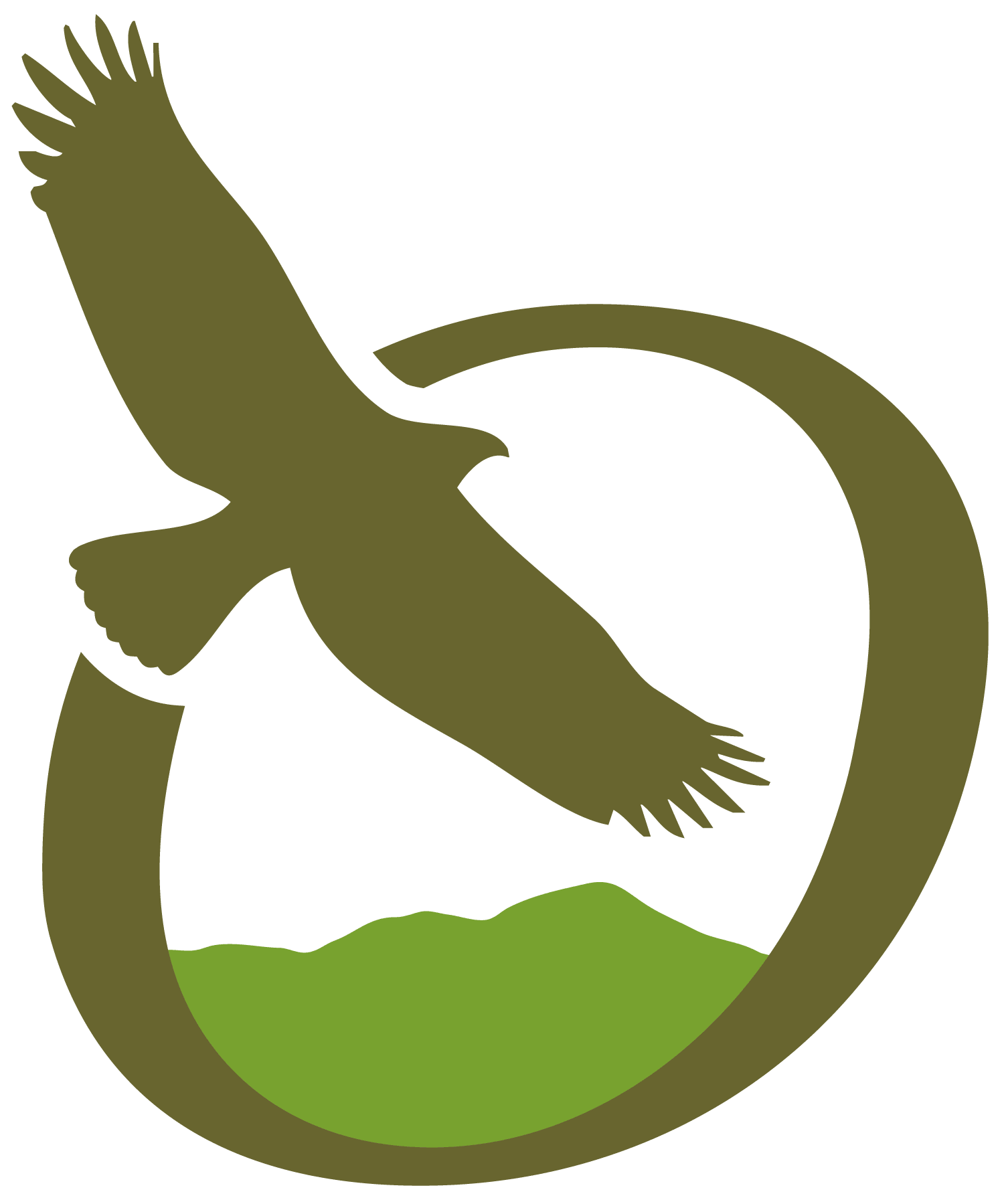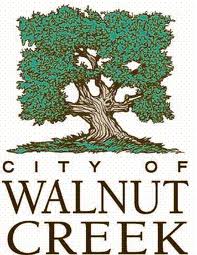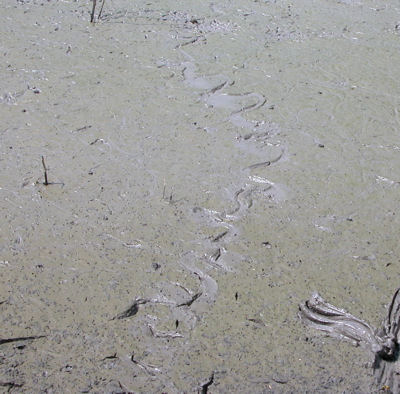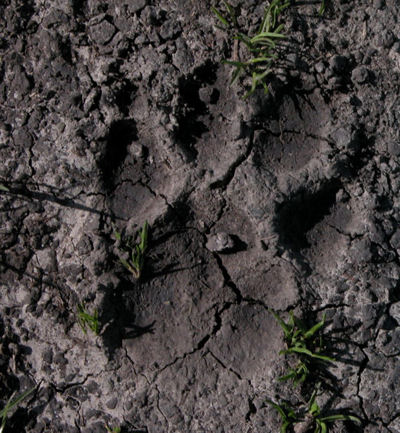Out of Sight - Clues Animals Leave
Since all animals leave clues to their presence, you can figure out who lives here even though you don't see the animal itself. These photos, taken by WCOSF members mostly while they were working in the Open Space, show some of the signs animals leave -- tracks, scats, food, homes, and bones.Coyotes
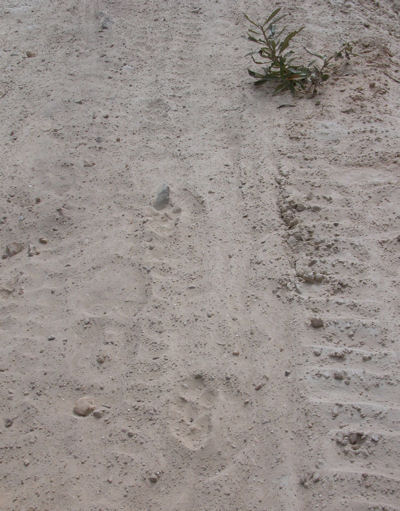
A coyote left tracks as it walked up the road. See if you can find the three coyote prints. It gets harder when they are mixed in with human footprints, bicycle tracks, and the road grader. (Click to enlarge)
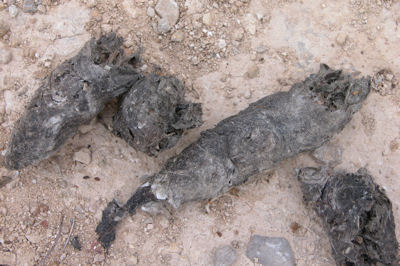
These coyote scats (droppings) were just up the road from the footprints in the photos above. While coyote scats are similar in size and shape to dog droppings, coyote scats contain hair and fur. Dog droppings do not. (Click to enlarge)
Snakes
Mountain Lions
Animal Remains
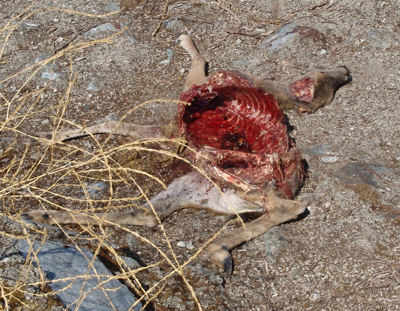
This deer was killed and eaten by a mountain lion, the only animal around here large enough to do it. The lion had finished and vultures were waiting up the hill for their turn. (Click to enlarge)
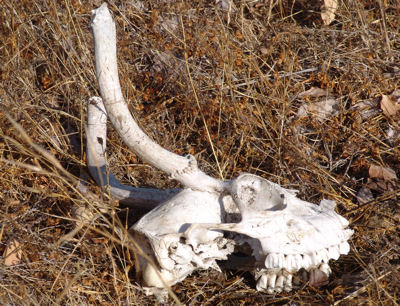
A well-aged deer skull. This could have been a mountain lion kill, or the deer's death might have been due to other causes. (Click to enlarge)
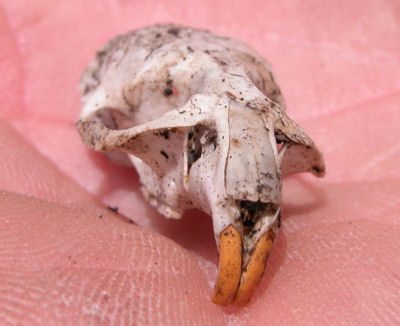
We found this vole skull under a bush. It was so tiny we had to pick it up to see what animal it was. And then, of course, we carefully put it back where we found it. (Click to enlarge)
Bird Nests
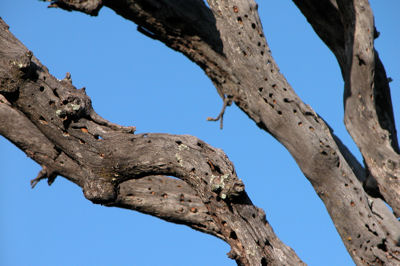
Acorn woodpecker granary tree. You can see light brown acorns in some holes; others are empty. The holes are typically in rows like these. (Click to enlarge)
Bush Rabbits
Small animals often make tunnels or paths through vegetation to protect themselves from predators. This is a brush rabbit path that we discovered while cutting weeds. Under normal circumstances the entrance would be much less obvious. (Click to enlarge)
Spiders
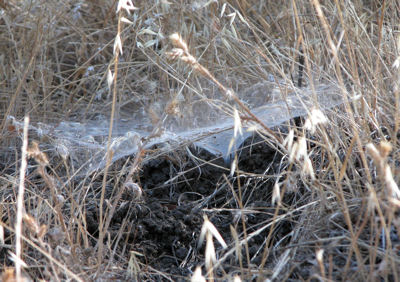
Many spiders build a web to trap food. In this case, the trapped insect eventually makes its way to the bottom of the funnel and drops through to the spider waiting out of sight below. (Click to enlarge)
Ground Squirrels
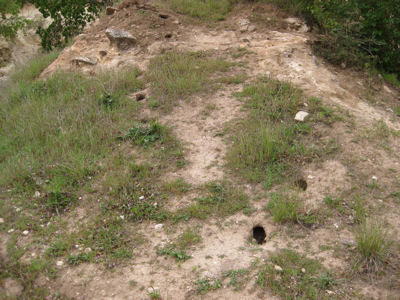
A ground squirrel burrow is identified by its multiple open entrances. An active burrow will have piles of freshly dug dirt next to the entrances; an abandoned one will not. These burrows provide homes for many small animals during and after the time the ground squirrels are using them. (Click to enlarge)




 Join/Renew
Join/Renew Donate
Donate Volunteer
Volunteer Maps
Maps Newsletter
Newsletter Facebook
Facebook